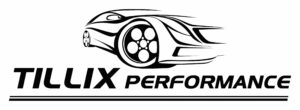What is CANBUS
CANBUS stands for – Controller Area Network.
It basically means every sensor can be connected to the same wire, and each sensor has its own address. So commands issued by the ECU are headed with a certain address and each sensor will only respond to the signals with its address tagged onto it.
Four wires are normally used on a CANBUS system. CAN-HI and CAN-LOW, V+ & V-
CAN-HI is used for systems such as airbags, abs and other critical systems.
The CAN HI signal will always be dealt with first by the ECU as they are more important.
CAN-LOW is used for systems such as indicators, lights, seat warmers etc.. Non Critical systems.
There is often many seperate CANBUS circuits through out the car. Engine Control / Gearbox Control / SRS Controls / Lighting etc.
A sudden surge of companies are pushing this so called ‘New Technology’ onto customers. Calling their chip’s CANBUS controllers or the likes, claiming only 3-5 wires are necessary to control ever engine function under the sun.
As far as I know, no Common Rail diesel vehicles are sold in Australia that use a CANBUS system for engine control YET.
Each control system has its own dedicated circuit/wiring back to the ecu. This includes Fuel Pressure > Boost > Engine RPM > Throttle Position > And everything else needed to run the engine.
The only few engines I know of that do run any CANBUS system is some older VP44 Pump equipped cars such as the early 3.0L Patrol and Holden Rodeo.
And the only CANBUS system used on these is pump control.
If anyone is trying to sell you a ‘CANBUS Chip’ or pushes this kind of technology in their advertising, I urge you to seriously question the ability of the chip and ask for some solid evidence to support their claims.

